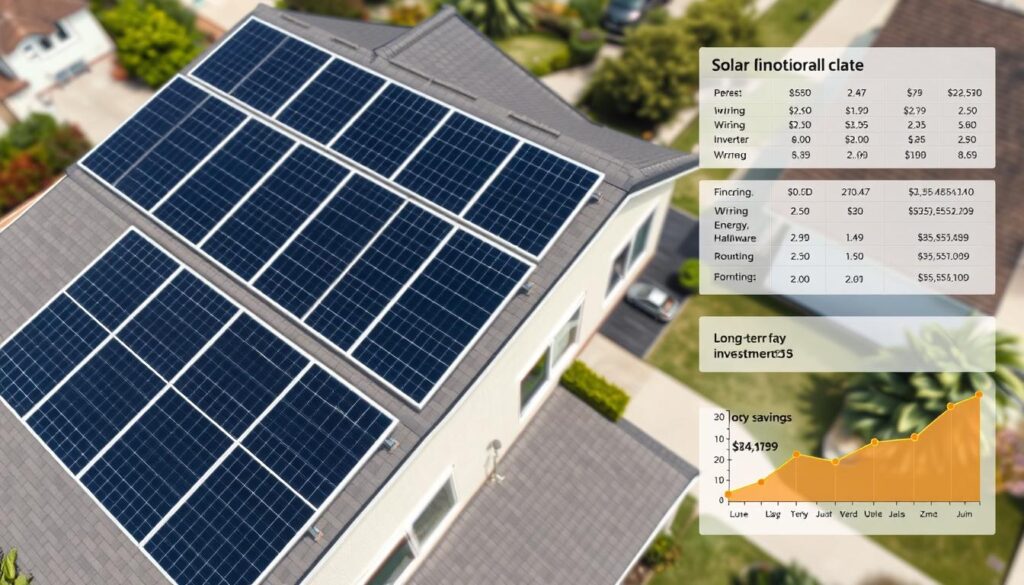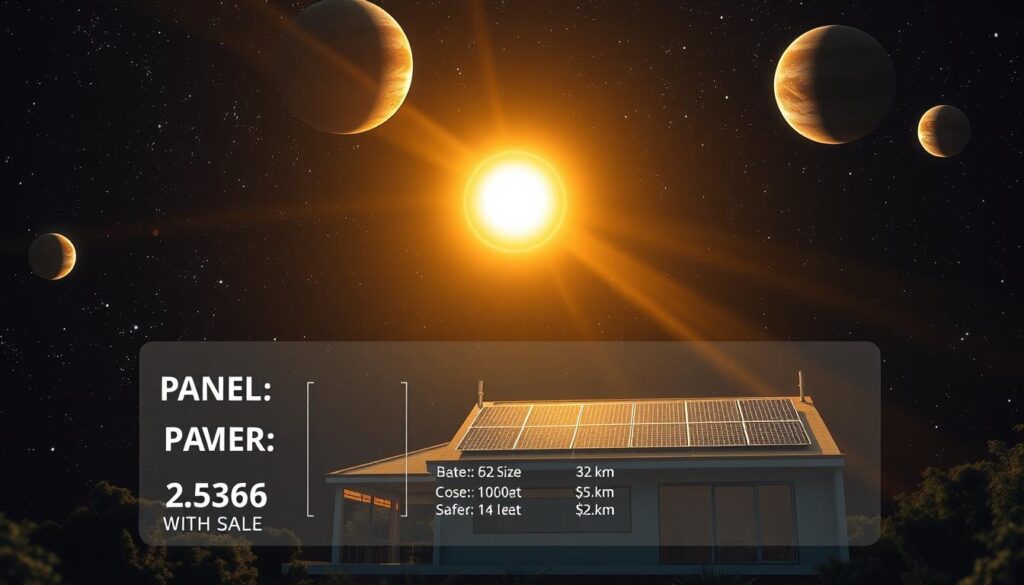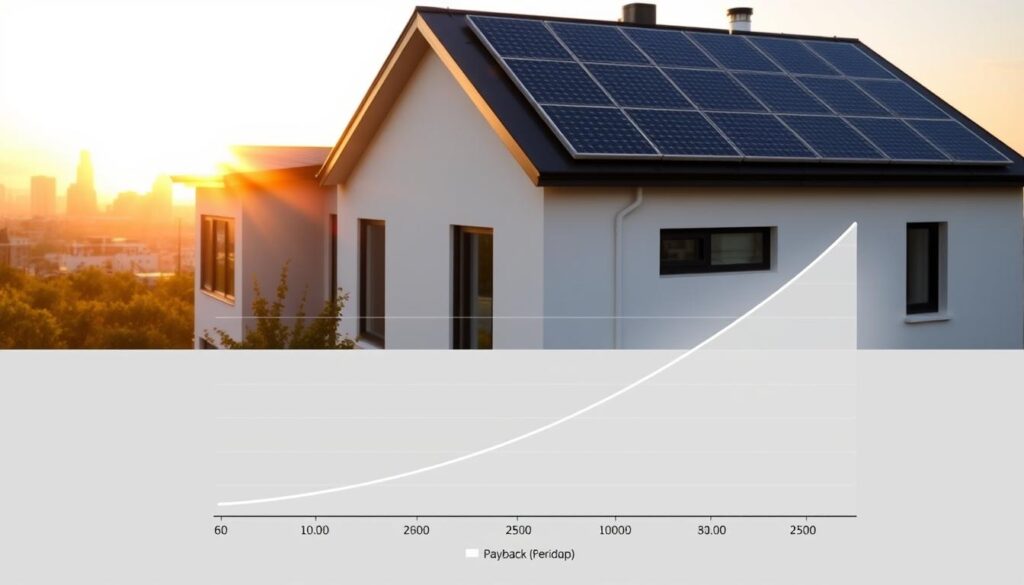Switching to renewable energy is more than just a trend—it’s a smart financial move. With rising electricity rates, many homeowners are turning to clean energy solutions to reduce their monthly bills and increase their property value. As of March 2025, a typical 5 kW system in California averages about $11,593 before incentives, offering significant long-term savings.
Investing in renewable energy isn’t just about cutting expenses; it’s about making a sustainable choice for the future. Federal tax credits and state incentives can further reduce upfront costs, making it an accessible option for many. Over 25 years, homeowners can save tens of thousands of dollars, making this a worthwhile investment.
This article will guide you through the key factors that impact your decision, from installation expenses to potential savings. We’ll provide practical insights to help you make an informed choice. Whether you’re looking to lower your electricity bills or increase your home’s value, this guide has you covered.
Key Takeaways
- Switching to renewable energy can significantly reduce monthly electricity bills.
- Federal tax credits and incentives make the initial investment more affordable.
- Long-term savings can reach tens of thousands of dollars over 25 years.
- Clean energy solutions can increase your property’s value.
- This guide provides practical insights to help you make an informed decision.
Understanding Home Solar Cost
Investing in renewable energy solutions can transform your energy expenses. The initial setup involves several factors that determine the overall expense. Understanding these elements helps you make informed decisions and maximize your savings.
What Influences Home Solar Cost
The total expense of a renewable energy setup depends on multiple factors. System size is a primary consideration. Larger systems generate more power but come with higher upfront costs. For example, a 5 kW system in California averages around $11,593 before incentives.
The type of panel you choose also plays a role. High-efficiency panels may cost more initially but can save you money in the long run. Installation specifics, such as roof type and location, further impact the overall expense.
Here’s a breakdown of key cost factors:
| Factor | Impact on Cost |
|---|---|
| System Size | Larger systems increase upfront expense |
| Panel Efficiency | High-efficiency panels cost more but save long-term |
| Installation Complexity | Roof type and location affect labor costs |
Impact on Monthly Electricity Bills
Switching to renewable energy directly affects your monthly electricity bill. A well-sized system can significantly reduce or even eliminate your reliance on the grid. Over time, the savings can offset the initial investment.
For instance, homeowners in California save an average of $48,000 over 25 years. The exact savings depend on your energy usage and local electricity rates. By reducing your monthly expenses, renewable energy becomes a financially smart choice.
Key benefits include:
- Lower monthly electricity bills
- Increased property value
- Long-term financial savings
Understanding these factors helps you evaluate the true value of your investment. With the right setup, you can enjoy both environmental and economic benefits.
Breaking Down Solar Panel Installation Expenses
Breaking down the expenses of installing a renewable energy system reveals key insights. The total price depends on several components, each contributing to the overall investment. Understanding these elements helps you plan effectively and maximize your savings.

Equipment Costs Breakdown
The equipment used in a renewable energy setup includes panels, inverters, and mounting hardware. Surprisingly, panels account for only 12% of the total expense. Inverters and balance of system (BOS) equipment make up 33%, highlighting their significance.
High-efficiency panels may cost more upfront but offer long-term savings. Choosing the right equipment ensures optimal performance and durability. Here’s a quick breakdown:
| Component | Percentage of Total Cost |
|---|---|
| Panels | 12% |
| Inverters & BOS | 33% |
| Mounting Hardware | 8% |
Installer Fees and Labor
Labor costs are a significant part of the total price. Fieldwork labor accounts for 7%, while office work makes up 26%. These fees cover planning, permits, and the physical installation process.
Choosing a reputable installer ensures quality workmanship and compliance with local regulations. Efficient installers can also reduce soft costs, saving you money in the long run.
Additional Factors Impacting the Price
Several other factors influence the final expense. Supply chain costs, permitting fees, and overhead can add up. Inefficiencies in permitting processes alone can increase costs by $2,500 to $5,000.
Streamlined processes in some jurisdictions reduce installation times by up to 50%. This directly impacts soft costs, making the overall investment more affordable. Understanding these variables helps you anticipate and manage expenses effectively.
Federal and Local Incentives for Solar Savings
Maximizing savings on renewable energy starts with understanding available incentives. Federal and local programs can significantly reduce your upfront investment, making clean energy more accessible. These programs are designed to encourage adoption and help you save money in the long run.
Federal Tax Credit Benefits
The federal tax credit is one of the most impactful incentives available. It allows you to deduct 30% of your installation expenses from your federal taxes. This credit applies to systems installed between 2022 and 2032, with no upper limit on the amount you can claim.
For example, if your system costs $20,000, you could save $6,000 on your tax bill. This tax credit is a dollar-for-dollar reduction, meaning it directly lowers what you owe. Even if you don’t owe taxes in the year of installation, you can roll over the credit to future years.
“The federal tax credit has been a game-changer for homeowners looking to invest in clean energy. It’s a straightforward way to reduce costs and make the switch more affordable.”
State Rebates and Local Incentives
Beyond the federal tax credit, many states offer additional rebates and incentives. These programs vary by location but can further reduce your net investment. For instance, California’s Self-Generation Incentive Program (SGIP) provides rebates for energy storage systems.
Local utilities may also offer incentives like cash rebates or net metering credits. Net metering allows you to earn credits on your utility bill for excess energy your system generates. These credits can offset future electricity costs, adding to your savings.
| Program | Savings Example |
|---|---|
| Federal Tax Credit | $6,000 on a $20,000 system |
| State Rebates | Up to $1,000 depending on location |
| Net Metering | Monthly utility bill credits |
By combining these incentives, you can significantly lower your initial investment. For example, a homeowner in California could save over $7,000 through federal and state programs. These savings make renewable energy a financially smart choice for many households.
How to Evaluate System Size and Efficiency
Choosing the right system size and efficiency is crucial for maximizing your energy savings. A well-sized setup ensures you generate enough power to meet your needs without overspending. Evaluating these factors helps you strike the perfect balance between performance and affordability.

Sizing Your System for Optimal Output
To determine the ideal size, start by analyzing your energy consumption. Review your monthly bills to calculate your average usage. For example, a household using 33 kWh daily with 6.1 peak sun hours would need a 6.2 kW system.
Use this formula: (Daily kWh ÷ average sun hours) x 1.15 efficiency factor = DC system size. This ensures you account for potential losses and maximize output. Larger systems, like an 11 kW setup, can cover higher energy needs while optimizing efficiency.
Understanding Panel Efficiency and Output Ratings
Panel efficiency directly impacts your system’s performance. High-efficiency panels generate more power in less space, making them ideal for limited roof areas. For instance, panels with 21.1% efficiency produce more energy than those with lower ratings.
When evaluating panel cost, consider long-term savings. While high-quality panels may cost more upfront, they often provide better durability and higher output. This reduces your overall expenses over time.
| Factor | Impact |
|---|---|
| System Size | Larger systems cover higher energy needs |
| Panel Efficiency | Higher efficiency increases power output |
| Panel Quality | Durable panels reduce long-term costs |
By carefully evaluating system size and panel efficiency, you can design a setup that meets your energy needs and maximizes savings. A well-planned system ensures you get the most out of your investment for years to come.
Comparing Quotes and Choosing a Quality Installer
Getting the best deal on renewable energy starts with smart comparison. EnergySage data shows that comparing multiple quotes can lead to up to 20% lower pricing. This simple step ensures you get the most value for your investment.
When evaluating quotes, look beyond the price. Check the installer’s reputation, experience, and certifications. A reliable installer ensures quality workmanship and compliance with local regulations. This can save you from costly mistakes down the line.
Consider factors like tax implications and utility interactions. For example, the federal tax credit can reduce your upfront expense by 30%. Net metering programs offered by utilities can also add to your savings by crediting excess energy production.
Prices vary by year and region. In 2023, the median price was $4.20 per watt, but EnergySage users found deals as low as $3.00 per watt. Comparing quotes helps you identify these regional and year-to-year differences.
Detailed quotes can uncover hidden fees or additional benefits. Some installers include extended warranties or maintenance packages. Others may charge extra for permits or site assessments. A thorough review ensures you’re comparing apples to apples.
Here’s a quick guide to evaluating quotes:
| Factor | What to Look For |
|---|---|
| Price | Compare total costs, including hidden fees |
| Warranty | Look for at least 12 years on panels and 5-10 years on workmanship |
| Reputation | Check reviews, certifications, and years in business |
| Incentives | Ensure eligibility for federal and state programs |
Leverage competition among installers to secure the best deal. Share quotes with multiple companies and negotiate for better terms. This approach not only saves money but also ensures you choose a partner committed to your satisfaction.
Strategies to Reduce Your Home Solar Cost
Exploring financing options can make clean energy more accessible. By understanding the various ways to fund your system, you can significantly lower your upfront expenses and maximize long-term savings. From direct purchases to loans and leases, each option has unique benefits.

Financing Options and Equipment Choices
When it comes to financing, you have several choices. A cash purchase offers the lowest average cost over time, as you avoid interest payments. However, loans and leases can reduce your initial investment, making it easier to get started.
Leases and Power Purchase Agreements (PPAs) allow you to pay for the energy produced rather than the system itself. This can be a great option if you prefer lower monthly payments. Additionally, federal solar tax incentives can further reduce your expenses.
Equipment choices also play a key role. High-efficiency panels may cost more upfront but can save you money in the long run. Comparing different brands and models ensures you get the best value for your purchase.
Shopping Around for Multiple Quotes
Getting multiple quotes is one of the most effective ways to lower your average cost. Prices can vary significantly between installers, so taking the time to compare options can lead to substantial savings. Look for detailed quotes that include equipment, labor, and warranties.
Off-season installations, particularly in winter, often come with promotions and discounts. Timing your investment during these periods can help you secure a better deal. Market trends also influence pricing, so staying informed can give you an edge.
| Strategy | Benefit |
|---|---|
| Cash Purchase | Lowest long-term cost |
| Loans/Leases | Lower upfront expense |
| High-Efficiency Panels | Greater energy savings |
| Multiple Quotes | Competitive pricing |
By adopting a proactive approach, you can explore all financing opportunities and make informed decisions. Whether you choose to purchase outright or opt for a loan, understanding your options ensures you get the most out of your investment.
Solar Investment Payback and Long-Term Savings
Understanding how long it takes to recoup your investment is key to making an informed decision. Recent studies show the average payback period is around 7.1 years. After this period, your system essentially provides free electricity while repaying the initial investment.

Calculating the Payback Period
To determine the payback period, divide the total system cost after incentives by your annual savings. For example, if your system costs $18,552 after tax credits and rebates, and you save $2,613 annually, the payback period is 7.1 years. This calculation helps you understand when your investment will start paying off.
Here’s a step-by-step breakdown:
- Subtract tax credits and rebates from the total system cost.
- Calculate annual savings by adding reduced electricity bills and income from selling excess energy.
- Divide the net cost by annual savings to find the payback period.
How Credits and Incentives Accelerate ROI
Federal and state tax credits can significantly reduce your upfront costs. For instance, a 30% federal credit on a $29,360 system saves you $8,808. Local rebates can add another $2,000, making the net cost much lower. These incentives shorten the payback period and increase your long-term savings.
System Size and Its Impact on Savings
The size of your system, measured in kilowatts, directly affects your savings. Larger systems generate more energy, reducing your reliance on the grid. For example, an 11 kW system can cover higher energy needs, leading to greater annual savings and a faster payback period.
Key factors to consider:
| Factor | Impact |
|---|---|
| System Size | Larger systems increase energy production |
| Tax Credits | Reduce upfront costs and shorten payback period |
| Annual Savings | Higher savings accelerate ROI |
Long-Term Benefits Beyond Payback
Once your system pays for itself, the benefits continue. You’ll enjoy reduced electricity bills for decades, and your property value may increase by up to 6.8%. Additionally, you’ll contribute to a cleaner environment, making this a win-win investment.
By understanding the payback period and leveraging available credits, you can make a smart financial decision that pays off for years to come.
Conclusion
Making the switch to clean energy is a decision that pays off in more ways than one. Based on EnergySage datum and market analysis, the investment remains compelling despite variations by state. Understanding the complete cost structure—including incentives and installation expenses—is key to maximizing your savings.
Federal and local programs, like the federal solar tax credit, can significantly reduce upfront costs. Comparing quotes and evaluating installers ensures you get the best value for your investment. With average payback periods around 7 years, the long-term benefits are undeniable.
Whether you’re motivated by financial savings or environmental impact, clean energy is a smart choice. Take the next step today and explore how you can make a sustainable and financially rewarding investment.
